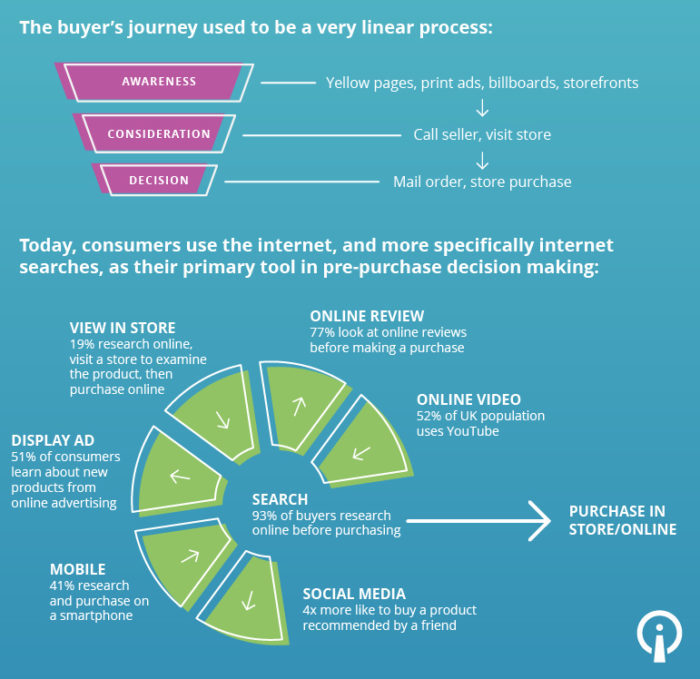4 Reasons Why Digital Marketing Spend Keeps Growing & Isn’t Stopping
January 18th, 2019 by
Cambridge Analytica. GDPR. Brexit. The 2016 presidential election. Privacy has been at the forefront of national news related to Facebook as well as social and digital media in general for the last few years.
Yet, spending on digital marketing and advertising continued to climb in 2017 and 2018, with spending on social advertising growing more sharply in 2018 than it had in any other year since Duke began its CMO Survey. In fact, according to the same survey (the largest of its kind), digital marketing currently makes up 44 percent of marketing budgets and is expected to increase to 54 percent in five years.
Interestingly, companies report a lack of confidence in their digital marketing capabilities and, despite increased spending, are having difficulty proving its impact on their revenue.
So, with all the privacy concerns and difficulty proving its value, why are more and more advertisers and marketers shifting more of their budgets towards digital marketing?
It’s Changing. Quickly.
With the maturation of digital media, tech innovations, and younger generations growing up with constant access to the internet, the marketing landscape has changed dramatically in recent years, significantly more than it had in decades prior. To keep up, marketers need to invest time, resources, and media spend in the digital space.
The largest opportunity for most companies is access to skilled capabilities to ensure these growing digital expenditures are impacting the company’s bottom line. Sixty percent of marketing leaders reported growing capabilities and skills by training and hiring, while a much smaller portion seek out relationships with agencies, specialists, or consultants.
Sounds like a lot of wheel-reinvention to me. Working with a professional digital marketing agency can mean the difference between growing investments for the sake of growing ROI vs. growing investments because you’re falling behind.
It’s Where Americans Are Spending Their Time.
Like it or not, advertising funds most of the content and media we consume, and it drives popular culture in the U.S. Since TV’s inception, advertisers have paid big bucks to produce the content that people watch.
Today’s digital media is no exception. YouTube stars rise to fame and fortune by producing content that viewers watch, earning the attention of advertisers and sponsors. Social media influencers make their living by producing content for the masses to consume that promotes products to certain interest groups.
Today, most Americans have a smartphone. When Pew Research first started collecting data on smartphone ownership in 2011, they calculated 35 percent of Americans owned a smartphone. The share as of February 2018 was up to 77 percent.
There’s no contest. Digital media is where nearly every demographic, in every market of the U.S. (and the world) is spending their time. For advertisers, digital media offers the opportunity to do more than just make an impression, which is about all one could expect from a billboard or traditional TV ad.
It’s Highly Influential in Purchase Decision Making.
The buyer’s journey used to be a very linear process: the buyer becomes aware of a need, they consider their options, they express intent, and make a decision. Today, consumers use the internet, and more specifically internet searches, as their primary tool in pre-purchase decision making.
According to Google, 93 percent of consumers do research online before making a purchase. And, in general, people find user-generated content (like reviews and testimonials) to be highly influential in their purchase decision making. The internet is bursting with this type of content, and digital marketing helps brands share it with the masses in a cost-effective manner.
Because of marketers’ ability to target specific audience segments based on their interests and online behavior, digital marketing can be far more personalized than traditional marketing. Billboards, TV, and print advertising broadly segment an audience and provide the same messaging to one large group. Digital marketing allows businesses to increase engagement and brand loyalty through personalization that anticipates potential customers’ needs and desires.
It’s Trackable and Offers More Insights on Effectiveness Than Traditional Advertising.
As digital marketers, we love data. So what we love most about digital marketing is its trackability.
With the right amount of expertise and technical know-how in place, digital marketers can often tell you which channels are producing the most business and highest ROI. When’s the last time a billboard or TV campaign could do that?
What’s key is making sure you’re focused on the metrics that matter, otherwise you might get totally lost in the information overload.
These aren’t the only reasons for the continued growth in digital marketing expenditures worldwide. Accessible technology is the way of the world today, so businesses who want to keep up in the increasingly competitive digital space should carefully consider their digital marketing capabilities and hire experts who can prove their ability to produce a real ROI. Let’s talk about how we can help you.
Images:


